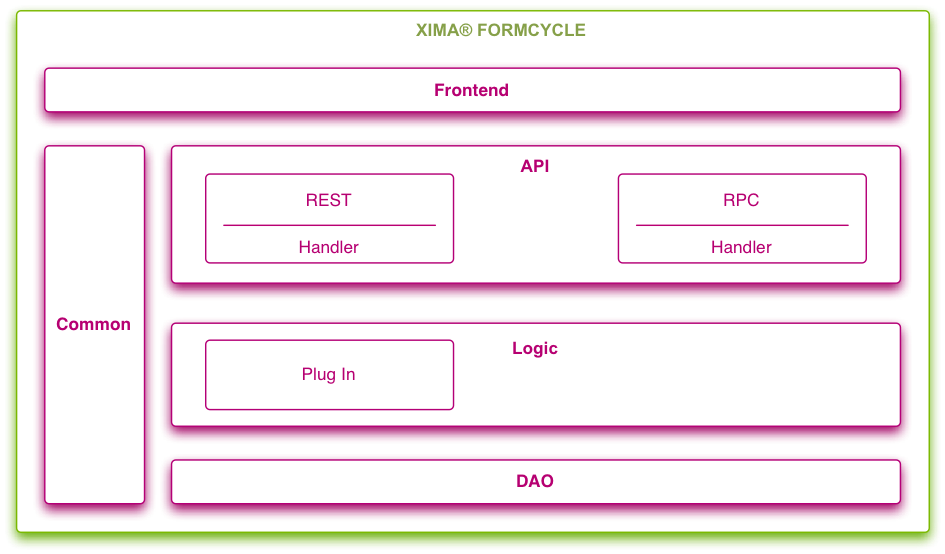System architecture
Content
[
Hide
]
Xima® Formcycle is a pure Java application that can be run on any operating system that supports Java and has installed an application server such as Tomcat or JBoss. It is based upon a modularized or layer oriented component architecture. All interaction with a database is managed by the Java Database Connectivity API (Jdbc).
System architecture without a frontend server
| Module | Description |
|---|---|
| Frontend | Administration interface |
| API (REST) | REST interface for administrative settings. May be used to integrate the Xima® Formcycle interface into other programs. |
| API (RPC) | Provides access to form records, states, workflow processing, actions and more. |
| Logic | Logic layer of the application. |
| Logic (Plug In) | Provides support for custom plugins that provide additional functionality. |
| DAO | Data access object, for accessing the database (Jdbc databases) or the file system. |
| Common | Services and functions common to all layers. |
System architecture with an optional frontend server
Setting up a frontend server may be useful for the following use cases:
- network installation, such as local intranet + DMZ
- load distribution
- splitting (multiple client, each with their own frontend server)
- customer specific extensions (such as integrating Xima® Formcycle into existing user interfaces)
| Module | Description |
|---|---|
| Frontend | Status information of the current server, or own interfaces |
| API (RPC) | Provides access to form records, states, workflow processing, actions and more. |
| Common | Services and functions common to all layers. |
| BSV | Bidirectional socket connection between the master server and the frontend server. |


